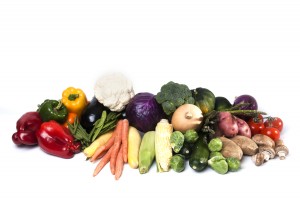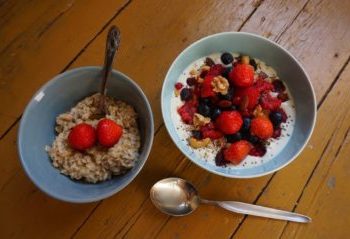Below is my latest blog post for Huffington Post, Eat your heart out with these 11 healthy tips.
You can also read it HERE.
February is American Heart month sponsored by The American Heart Association. Heart disease is the leading cause of death in the United States; 1 in 4 deaths are caused by heart disease.
For some good news, however, heart disease can often be prevented by making healthy food and lifestyle choices. As a nutritionist, I often work with clients to help them develop a healthy diet and lifestyle to prevent heart disease.
Below are 11 simple — and healthy — tips for heart health.
1. Start your day with a bowl of oatmeal.
Oatmeal not only tastes yummy but it is also good for the heart as it is rich in soluble fiber, shown to reduce cholesterol levels. Beta glucans, the kind fiber in oatmeal, may be particularly beneficial for heart health and for weight control. Oatmeal also contains magnesium and potassium, minerals which contribute to a healthy heartbeat.
2. Watch your portion by using a smaller bowl and spoon.
A simple way to practice portion control is to use smaller plates; we tend to eat less when we use smaller plates and bowls. And… use a teaspoon instead of a tablespoon — you will probably eat even less.
3. Top your oatmeal with sliced banana.
Bananas are rich in vitamins and minerals, in particular potassium, which help promote heart health. They are also relatively low in calories and high in fiber to help keep your weight at bay.
4. Include a bean soup for lunch.
Beans contain soluble fiber which help lower cholesterol. Lentil and split pea soup are great choices. They are also filling and help keep you satisfied.
5. Snack on a handful of mixed nuts.
Nuts contain heart-healthy unsaturated fats and have been shown to reduce heart deaths in the elderly. Nuts also help to control weight. The key is to snack on nuts instead of chips, and practice portion control. Aim for approximately ¼ cup or one layer of your palm.
6. Start your dinner with a colorful salad.
Starting your meal with a colorful salad is a great way to boost heart healthy nutrients in your diet. Vegetable salads are full of fiber, vitamins and minerals, and low in calories. The different colors provide different nutrients so throw in dark greens which are high in folate, tomatoes high in lycopene and yellow peppers which are full of vitamin C.
7. Dress it with olive oil.
Olive oil contains heart-healthy monounsaturated fat. Best to use an olive oil based dressing over creamy varieties such as blue cheese. However, it’s important not to over pour; aim for 1-2 tablespoons, or a shot glass worth.
8. Cook dinner at home.
People who cook dinner at home tend to eat healthier and take in fewer calories. No surprise. Restaurant portions are huge and full of all sorts of hidden ingredients which are loaded with calories.
9. Enjoy grilled salmon or arctic char as your main course.
Fatty fish contain omega-3 fatty acids which are known to be good for the heart. Grill your fish with your favorite spices and a drizzle of olive oil.
10. Have cauliflower as a side dish.
Cauliflower is a cruciferous vegetable, a cousin to broccoli and Brussels sprouts, high in fiber and low in calories. It is an excellent, low-calorie source of potassium. One cup of chopped raw cauliflower contains 320 mg in only 27 calories
11. Enjoy a small piece of dark chocolate for dessert.
Saving the best for last, research found that people who eat dark chocolate have lower rates of heart disease than people who do not. Chocolate contains flavonols, phytochemicals which may reduce heart disease risk. However, remember that amounts count and aim for one small square.
And, finally, because no one got heart disease from a deficiency of chocolate, if you are not a chocolate lover, no need to start indulging. Finishing off your meal with fresh fruit will do just fine.
We would love to hear your favorite heart-healthy foods.
Follow Dr. Lisa Young on Twitter: www.twitter.com/drlisayoung




